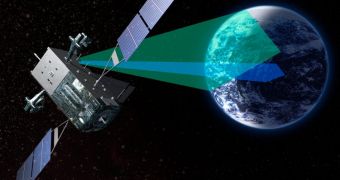Officials at Lockheed Martin announce the the first of its Space Based Infrared System (SBIRS) geosynchronous satellite series has beamed down its first infrared images. The spacecraft, called GEO-1, was launched on May 7.
At this point, the orbital instrument is being put through its paces in a series of early orbital tests, but engineers at the company say that the spacecraft is performing well within expected parameters.
They say that the SBIRS GEO-1 satellite will provide a quantum leap in infrared surveillance capabilities for the United States and its military, delivering up-to-date information directly to warfighters in combat theaters around the world.
GEO-1 beamed down its first IR image on June 21, and the data were picked up by the SBIRS ground station. The satellite was built for, and will be operated by, the United States Air Force. The USAF seeks to improve its orbital capabilities as soon as possible.
With the addition of this new component, the US military will become better equipped and capable of detecting missile launches occurring anywhere in the world. In turn, this will contribute to supporting the US national ballistic missile defense system.
At the same time, the technical intelligence gathering capability – the ability to accumulate data from other countries via espionage – of the United States will be significantly improves. This is made possible by GEO-1's highly sophisticated scanning and staring sensors.
“We are tremendously proud of Team SBIRS for their superb efforts to initialize the Air Force’s newest, most capable infrared payload,” says Col. Mike Noble. He is the deputy director of the USAF Space and Missile Systems Center (SMSC) Infrared Space Systems Directorate.
“This is another important milestone for the SBIRS’ Air Force and industry team. Successful payload activation is a major step toward fielding the all-new GEO capabilities for the nation and joint warfighters,” the official adds.
The satellite is now on a geosynchronous orbital slot, after Lockheed engineers carried out a total of six Liquid Apogee Engine (LAE) burns to move the spacecraft from the provisional orbit it achieved after launch.
At this point, the infrared instruments are undergoing a series of early orbit calibration and testing, which will conclude in the near future. After this happens, Lockheed will relinquish control to USAF.
“SBIRS GEO-1 is performing flawlessly thus far, and the first image sent from the satellite is outstanding. We are focused on executing an efficient and thorough checkout of the spacecraft and ultimately delivering unprecedented infrared surveillance capabilities to our nation,” says Jeff Smith,
The official is the vice president of the Lockheed Martin Overhead Persistent Infrared (OPIR) mission area.

 14 DAY TRIAL //
14 DAY TRIAL //